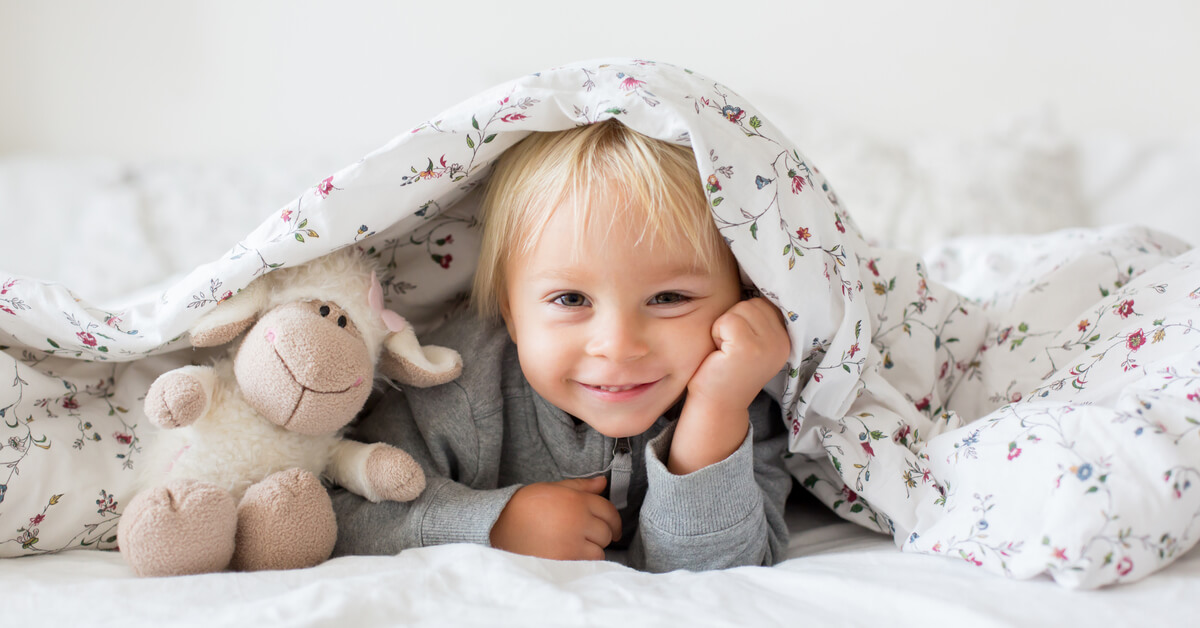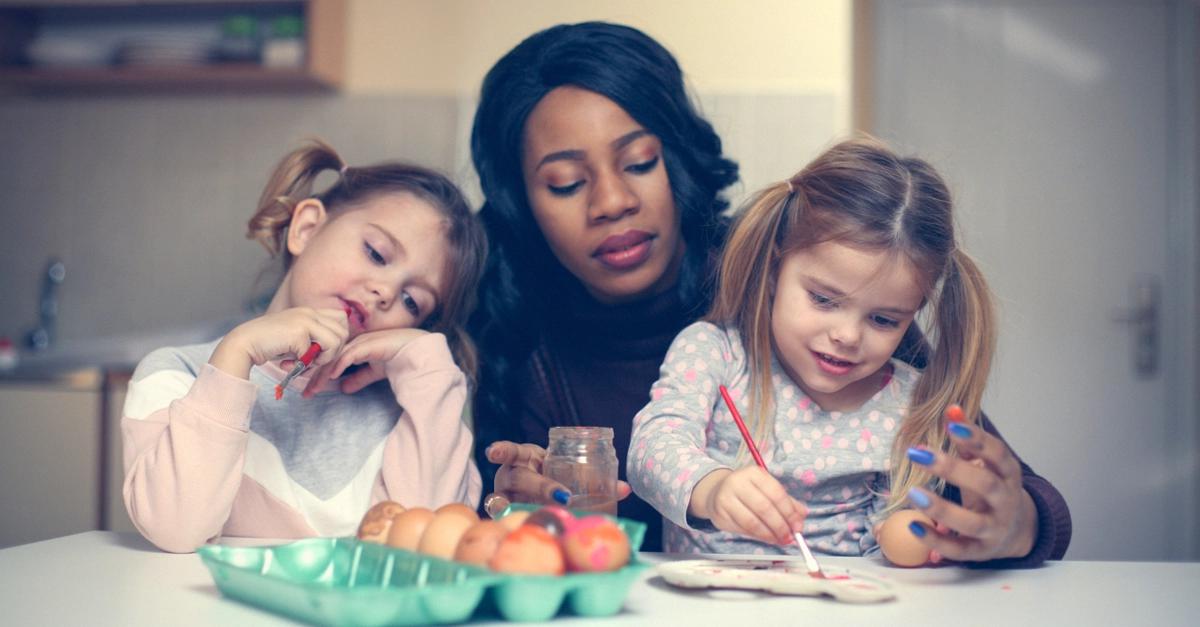
There are many ideas for creating a calming bedroom for a baby or toddler. And there are many reasons to do so. A main one is better sleep.
Your baby or toddler’s room can play a role in their sleep. And we know that sleep and more sleep are crucial to a child’s life as much as proper nutrition. A study found that toddlers who get the most sleep are better at function and skills, have a better attention span, and are less likely to be fussy. Calming bedrooms for young children can help
Check out these toddler bedroom ideas for creating a calming space for your child to help them function and sleep well.
The Right Light Can Help Create a Calming Bedroom for a Toddler
Aside from touching and imitating, babies learn by seeing. It’s important to remember that children of different ages benefit from different lighting solutions.
In their first few months, for instance, your little one needs soft-glow lighting. Since they will be spending most of their time sleeping, soft lighting will prevent overstimulation and encourage restful sleep even during the day.
At around four to six months, your baby will have more waking hours for play. Natural lighting during the day will encourage a happy mood for play.
Dimmable lights are also preferred for babies’ rooms. Since the eyes of a baby are very sensitive, being able to reduce the brightness of the light when necessary, is very important.
For example, during late-night diaper changes or nursing sessions, you want a low-level light to not disturb your baby’s sleep pattern.
As your little one grows, their room will require a variety of lighting options for different activities. For example, toddlers will need some sort of task lighting for storytime. Kids at this age also have a tendency not to stay in one place. Thus, it’s ideal to use a plugin night light when they need to have a potty break or drink water.
A night light can also help you move freely inside the room and prevent you from stubbing your toe on toys or any furniture.
Use Calming Colors to Create a Calming Bedroom
In nurseries and toddler bedrooms, light and subdued colors are preferable as they are very soothing. Popular choices are baby blue, pastel pink, and soft yellow. You can also opt for lavender or celery green if you want something different.
For active toddlers, you can incorporate warm colors that evoke happiness and comfort, such as shades of orange, red, and yellow.
These colors are said to stimulate the mind and have an energizing effect on the body. Note that warm tones are best used as accents. You can try painting a single accent wall or placing accessories in these rich colors. The rest of the colors in your toddler’s room should be in cooler shades.
For easy mixing and matching of colors, use soft neutrals like gray or taupe as your base. Try not to overdo your color combos to retain balance and harmony. Aside from the wall colors, avoid highly contrasting palettes and busy patterns on the bedding. Consider plain white linen as it is more relaxing than colored and patterned sheets.
Soft white is an excellent choice too. It isn’t just soothing but also very practical. It makes a fine choice for parents who want something that will grow with their child. You can also choose creamier shades like soft ivory or antique white.
Calming Toddler Bedrooms Are Cozy
Decorating the nursery or toddler bedroom is exciting, but you want to make sure that all the pieces go well together to avoid a chaotic environment.
One of the easiest ways to make your toddler’s room cozy is to add soft textures like rugs, wool, and carpet. Consider scattering a few sheepskin rugs to make for an even softer space.
Don’t forget to add some knit throws, stuffed toys, pillows, and cushions (but NOT in sleep areas). Spoil your little one with soft and calming textures.
You also want to decorate your nook that you use for nursing or reading. You need a comfortable place for nourishing your baby, especially during late-night feedings. A skirted nursery glider and an ottoman to rest your feet on make a cozy and inviting spot. You also need a welcoming space to enjoy books together.
Read Next | Minimalist Bedroom Designs for Kids
To Create a Calming Space, Less is More
A surefire way to boost the sense of calmness and relaxation in a toddler’s room is keeping the space minimal.
A minimalist bedroom doesn’t look messy and is easier to clean and keep organized. It creates a more peaceful vibe that babies and toddlers will love. Plus, it looks natural, simple, and unobtrusive.
Here are some tips when designing a calming minimalist room for your little one:
- Don’t overdo the accessories. Remember, less is more. Focus on emphasizing up to three focal points, such as a dramatic piece of art on the wall or a cozy reading corner with a few accent pillows and a soft rug.
- Instead of a changing table, consider adding a changing pad to an existing dresser. If using a changing table, opt for one that offers plenty of storage to house your baby essentials.
- Use multifunctional items. Go for chairs that have storage underneath, a dresser that also serves as a changing table, hanging cabinets that save space, etc. Make sure to not install open shelving near the baby’s crib for safety purposes.
Add Natural Elements
Incorporating natural elements can make a room feel calmer. Consider placing an air-purifying house plant that’s non-toxic, such as Baby’s Tears, Boston Fern, and Spider plant.
Another creative way to bring the outdoors to your child’s room is through sounds. Bring in a small water fountain or a baby bouncer with nature sounds. You can also use nature-inspired wallpaper and murals as an accent.
Conclusion
A cozy and soothing bedroom makes for a healthy, happy, and calm baby or toddler. Fortunately, designing a calming bedroom for a toddler is easy. Begin by choosing the right lighting fixtures to induce a positive mood during the day and relaxation at night.
Next, choose subdued colors for the walls, ceilings, cabinets, and other furniture. You can also make your child’s room cozier by adding soft textures through rugs, pillows, and blankets. However, don’t overdo your decoration to maintain a sense of peace and tranquility.
Lastly, consider adding natural elements, like a plant or a nature-inspired piece to bring the calming effects of nature to your child’s room.
Leila Amber is a home improvement and interior design expert and a content director at KnotHome. She has a keen interest in the content that inspires her to dig deeper into the practice and create helpful design and decor guides.
Like what you read? JOIN the Mommybites community to get the latest on FREE online classes, parenting advice, events, childcare listings, casting calls & raffles, and our Parents With Nannies Facebook group. SIGN UP NOW!
Have a Nanny? Read These Articles!
Mommybites is one of the best and most trusted nanny resources in the New York area.







